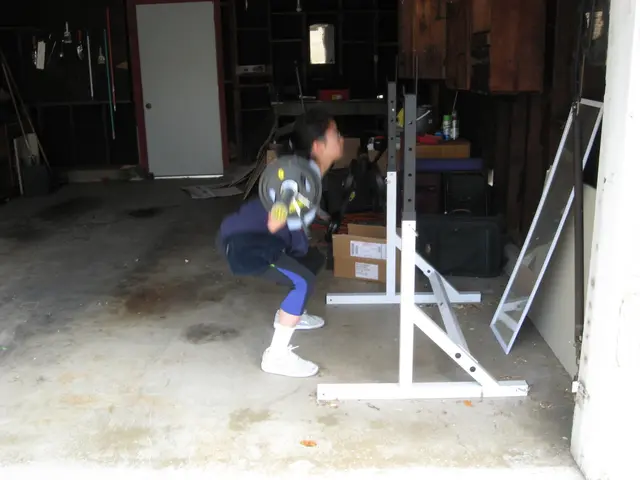Develop muscle strength and prevent injuries by incorporating these eccentric workout routines.
Cranking out reps at the gym might make you feel like a beast, but it's not just about how much weight you lift. The real secret to building strength, reducing your injury risk, and getting that much-desired bulky bod? It's all about the descent.
Yes, you read that right. When it comes to muscular growth and injury prevention, your work isn't done once you lift the weight. The lowering phase, known as the eccentric phase, is where the real magic happens. And no, we're not just talking about saving your knees.
Eccentric strength: The next level
Think of it like this: During an exercise like a bicep curl, your muscle shortens to lift the weight, and it lengthens as you lower it. Some experts even say that your muscles can produce more force during the extension than the contraction phase. That means you can handle more weight - up to 40% more, according to some studies - during the eccentric phase.
But don't be fooled by how easy it feels. Your muscles are working harder than you think during eccentric movements, explained Christoph Handschin, a researcher who studies muscles at the University of Basel in Switzerland. A fitness session on an eccentric bike, which forces you to push against pedals that spin backward, might feel like a breeze, but don't be surprised if your muscles scream the next day.
More bang for your buck
That extra effort during the eccentric phase can pay off in a big way. Some research suggests that eccentric training can lead to approximately 20 to 50% greater strength gains compared to traditional exercises. This increase in strength can make eccentric moves perfect for older adults or those recovering from injuries, who might struggle with traditional resistance training.
"If you can't do a pull-up, for example, you can still work on your pull-up muscles by practicing just the lowering down part, which is easier," said Katy Bowman, a biomechanist and author of Move Your DNA.
Injury prevention
Remember how we said muscles under strain can lead to injury? Well, eccentric movement can help. By training your muscles to lengthen with control, you'll strengthen them over time, reducing the chance of injury. In fact, research indicates that eccentric exercises can help prevent injuries like hamstring strains, and even treat existing tendinitis more effectively than other interventions.
Getting started
So, how do you become a master of the eccentric phase? Start slow. As you lower the weight during an exercise like a squat or push-up, take a few seconds to really focus on the descent. The goal is to make it feel like a workout in itself.
For even more benefits, you'll want to gradually increase the weight you're lowering over time. This will help you progressively overload your muscles, leading to greater strength gains. Equipment like a leg press or seated cable row machine can help you isolate your muscles and target specific areas.
If you're feeling like a true Viking, try Nordic hamstring curls. They're an excellent full-body exercise that can help reduce your risk of injury and don't even require any fancy gym equipment. Just kneel on the floor, plant your feet behind you, and slowly lower your body toward the floor, keeping your body straight. As your hamstrings get stronger, you can increase the difficulty with more sets and reps.
Finally, get outdoors and embrace the hills. Walking or running downhill is a terrific way to build lower body strength and improve your body's ability to quickly produce force. Just be sure to start slow and work your way up to steeper slopes and faster speeds.
Happy lifting (and lowering)!
Note: It's important to remember that while eccentric phases offer many benefits, they also carry a risk of injury if not executed properly. Therefore, maintaining proper form and control is vital.
Engaging in science-based health-and-wellness practices, it's discovered that focusing on the eccentric phase of fitness-and-exercise movements can lead to more remarkable strength gains and injury prevention. Not only does this phase involve the lengthening of muscles during the descent, but some experts claim that muscles can produce more force during this phase compared to the contraction phase.






